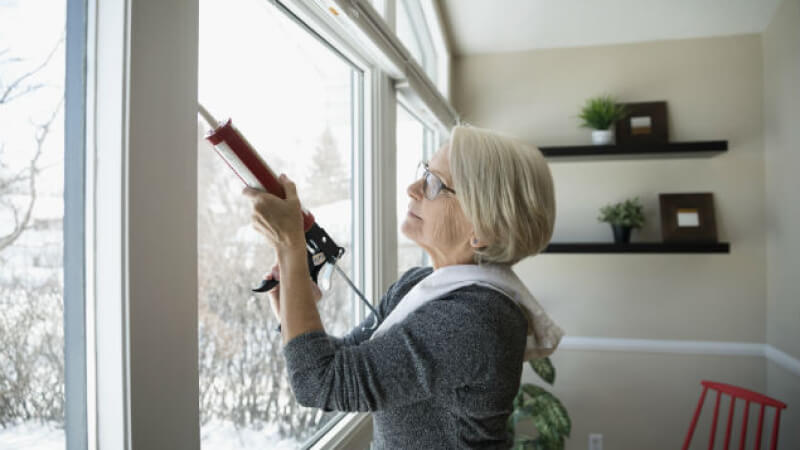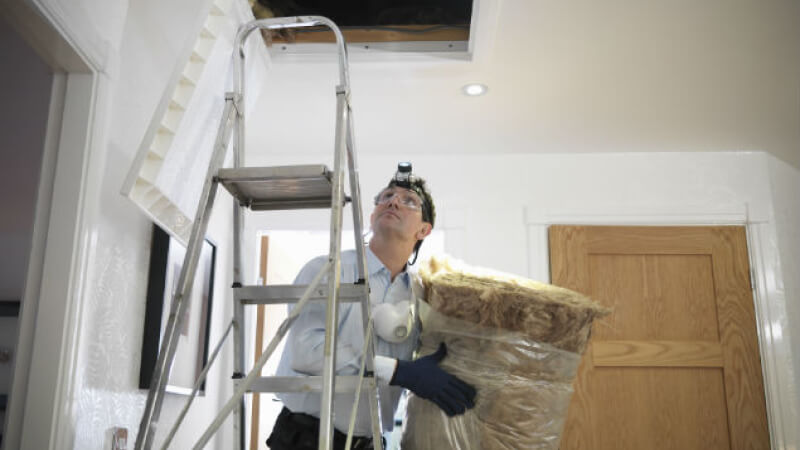Energy-efficient home improvement tips for every budget

No matter what type of climate you live in, an energy-efficient home can keep you comfortable year-round — and save you money on your utility bills. Upgrading your home to be more energy efficient can range from simple projects paid out-of-pocket to those which will likely require financing.
Read on to learn how improvements to your home’s energy efficiency can help you meet your goals while staying within budget.
Where to begin?
While even smaller projects can have a significant impact on lowering energy costs, larger projects may increase your home’s value as well as its energy efficiency. According to Kiplinger.com, 90% of home buyers are looking to keep utility bills down — and to do so without sacrificing comfort.
Where should you start? First, decide where your priorities lie. Are you looking to lower your monthly electricity bill? Improve your home’s carbon footprint? Increase your home’s market value? Your answers to these questions will help determine whether tackling a smaller, less expensive project or going all-in on a larger upgrade makes sense for your budget and goals.

Smaller projects, like caulking around windows to seal air leaks, can save you money on monthly utility bills.
Starting small
If your goal is to whittle down your monthly energy bills, there are several improvements you can make that won’t break the bank:
- Caulk around windows to seal air leaks
- Install weather stripping around drafty doors
- Replace existing thermostats with programmable models
- Switch to LED or CFL bulbs
- Install dimmer switches and motion sensors
- Install energy-efficient light fixtures
- Install low-flow shower heads and faucets
DIY projects, like caulking your windows or switching out your light bulbs, are a great way to start lowering your energy costs since they require little time, effort, and money to complete.
If you happen to have electrical or plumbing experience — or have a friend or relative who does — then the more technical improvements, such as upgrading your thermostats or installing water-conserving faucets, could also be added to your list.
Keep your overall goals in mind. While these small changes can save you money on your heating and cooling costs and make your home more comfortable, they’re probably not enough to market your home as “energy efficient” when it comes time to sell. For that, you’ll need to make more significant changes.

Larger projects may require financing but can make your home more attractive to potential buyers.
Major upgrades
Are you planning to move in the near future? Increasing your home’s energy efficiency could, in turn, increase the resale value and provide peace of mind to future buyers. These improvements will generally require more planning, as well as a financial strategy to cover the costs.
Some examples are:
- Replacing older kitchen appliances with energy-efficient models
- Upgrading an older furnace and/or water heater
- Switching out existing windows and exterior doors with air-tight, insulated models
- Adding or upgrading insulation in the attic, basement, or interior walls
- Replacing an older or damaged roof with energy-efficient roofing materials
- Installing solar panels
Taking on significant home improvements like those listed above may feel overwhelming — especially when you have no idea where to start. Using a tool such as a home energy audit can give you a good idea of how much energy you consume and provide recommendations to improve your home’s efficiency.
Paying for home energy-efficient upgrades
Whether you decide to pay for improvements to your home all at once or over time will depend on the scope of each project. For instance, DIY projects such as caulking windows and replacing light bulbs could be paid for out-of-pocket using cash or a credit card. Larger projects, like upgrading your furnace or installing solar panels, will have a much higher price tag. Tapping into savings to pay for the improvements up front is one option. Or, if you have some equity built up in your home, you could open a home equity line of credit (HELOC) to pay for the upgrades.
What to remember
At the very least, making simple upgrades to your home’s energy efficiency can save you money on your monthly utility bills while keeping your home comfortable year-round. Larger projects could significantly improve your home’s energy savings, but at a substantially higher cost. However, keep in mind that major renovations are likely to increase your home’s value and curb appeal, making it more attractive to prospective buyers when you’re ready to sell.
Completing a home energy audit prior to starting any projects will help you identify your home’s current energy consumption and offer home energy improvement suggestions you can then tailor to fit your budget and goals.
Ready to take the next step?
A home equity line of credit can be the right financial cushion to make sure you’re made ready for anything. If you think you might be ready for the next step, learn what you’ll need to apply for a HELOC with this application checklist. We have a team ready to help with all your home borrowing needs. Simply call 1-888-333-1206, or click here to learn more.
Related topics

.jpg)

© Citizens Financial Group, Inc. All rights reserved. Citizens is a brand name of Citizens Bank, N.A. Member FDIC
Disclaimer: The information contained herein is for informational purposes only as a service to the public, and is not legal advice or a substitute for legal counsel, nor does it constitute advertising or a solicitation. You should do your own research and/or contact your own legal or tax advisor for assistance with questions you may have on the information contained herein.